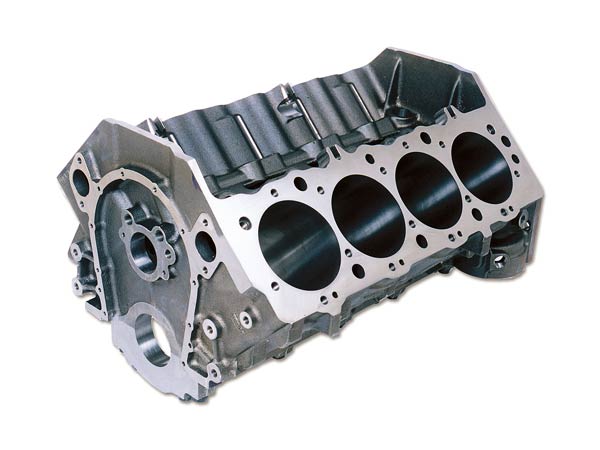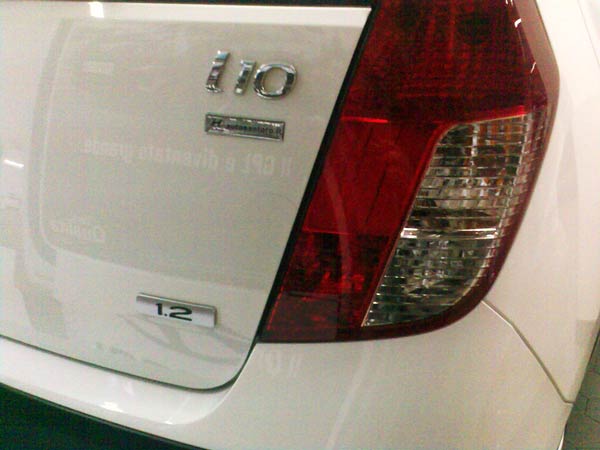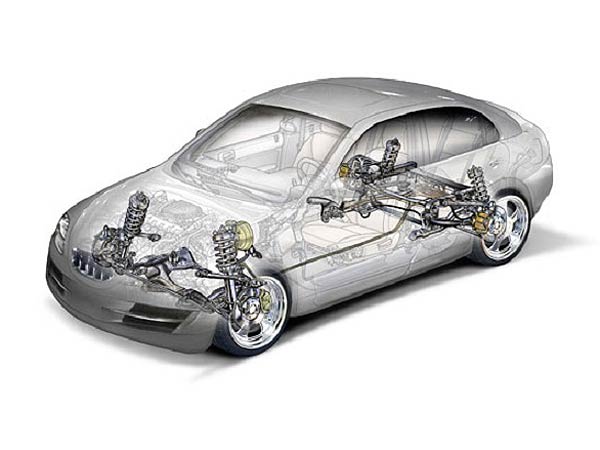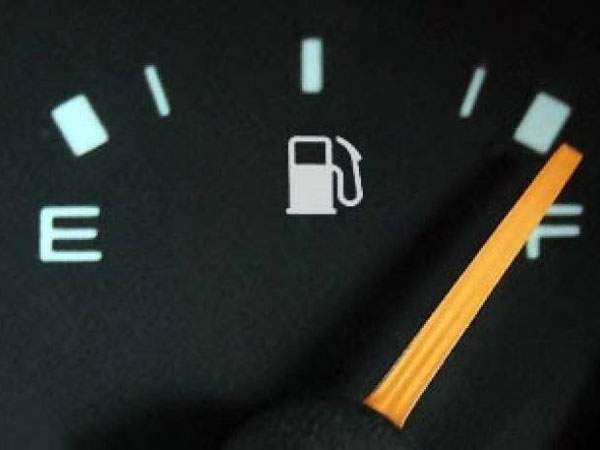Latest News
-
 Top 10 Used Bikes to Kickstart Your Riding Journey
Top 10 Used Bikes to Kickstart Your Riding Journey -
 Suzuki Swift Hatchback Scores 4 Star Safety Rating At JNCAP – ADAS, New Engine & More
Suzuki Swift Hatchback Scores 4 Star Safety Rating At JNCAP – ADAS, New Engine & More -
 Porsche Introduces Macan EV In India, Expanding Electric Portfolio
Porsche Introduces Macan EV In India, Expanding Electric Portfolio -
 Tata Motors To Manufacture Jaguar Land Rover Cars In Billion Dollar TN Plant - Report
Tata Motors To Manufacture Jaguar Land Rover Cars In Billion Dollar TN Plant - Report -
 Ford Territory SUV Name Trademarked – Likely To Be Positioned Below The Everest SUV
Ford Territory SUV Name Trademarked – Likely To Be Positioned Below The Everest SUV -
 Jawa Yezdi Expands Mega Service Camps To 32 New Cities, Focusing On Tier-II And Tier-III Regions
Jawa Yezdi Expands Mega Service Camps To 32 New Cities, Focusing On Tier-II And Tier-III Regions -
 Sany India Introduces SKT105E: An Electric Dump Truck
Sany India Introduces SKT105E: An Electric Dump Truck -
 Force Gurkha 5-Door SUV – New Features, Dual Tone Interiors & More
Force Gurkha 5-Door SUV – New Features, Dual Tone Interiors & More -
 Hyundai Verna Tops Sales Chart In India's Mid-Size Sedan Segment
Hyundai Verna Tops Sales Chart In India's Mid-Size Sedan Segment -
 India's Elections Trigger Airfare Surge in Tamil Nadu
India's Elections Trigger Airfare Surge in Tamil Nadu
Common Car Specifications Explained: A Guide To Car Facts & Figures
Have you ever been in a conversation with someone linked closely to automobiles or tried researching a car but gave up because you didn't understand head or tail of what he was on about, or what was listed in the specifications list? We know it happens quite often, so we thought we'd break down some commonly heard basic automotive jargon as plainly and simply as we could for you.
Recommended Video


1. Engine
The engine is like the heart of the car. It is a machine that converts power into motionor produces the force that propels the vehicle into motion. Engines commonly see three types - petrol (runs on gasoline), diesel (powered by diesel), electric (powered by batteries) and hybrid (using a combination of a fuel-driven engine and an electric one). Vroom vroom is the sound a big engine makes.

2. 4-cylinder, 3-cylinder, etc.
A cylinder is a ‘chamber' (to describe it loosely) where fuel is ignited to power the car into motion. So a 4-cylinder engine will have four of these compartments, a 3-cylinder, three, and so on. The cylinder houses a pistonor large valve that creates compression that helps ignite the fuel.

3. Displacement - Eg. 1259cc or 1.3-litre
The measurement of the volume of the engine's cylinders or ‘chambers' is called displacementand is measured in litres or cubic centimetres. So if you see "1259cc", it means the volume of the cylinders together is 1259 cubic centimetres. "1.3-litre" on a spec sheet is just another way of saying the same thing, although not as precise, and means the volume of the cylinders is 1.3 litres in total.

4. 5-speed transmission, 6-speed transmission, etc.
Much like you would choose different gears on a bicycle for varying inclines and pace, you need to choose gears depending on the speed of the car or the road situation. A 5-speed transmission has 5 gears or speeds you can choose from while driving or riding. A manual transmission is one that requires you to change speeds manually, while an automatic transmission picks gears automatically, requiring you to only operate the brakes and accelerator.

5. Power - For Eg. 75 hp
The easiest way to understand this is the unit of power-horsepower. One horsepower is informally defined as the amount of power one horse gives while pulling. So if your car has 75 horsepower, it has the pulling power of 75 thoroughbreds. To be a little more physicistical, it is the power required to raise 550 pounds a distance of one foot in one second.

6. Torque - Eg. 200 Nm
Torque is the ability (of the engine) to do workor a force that tends to cause rotation of the wheels in the case of a car or bike. Torque is measured in Newton Metres (Nm)and is usually higher in diesel engines when compared to similarly sized petrol ones. Vehicles with higher torque usually allow fewer gear changes, if set up well.

7. Drivetrain
This is the system in a vehicle that connects the transmission or gearbox to the drive axlesand is broken down into three main categories - front wheel drive (FWD), rear wheel drive (RWD) or all-wheel drive (4x4/4WD/AWD). FWD means the power goes to the front wheels, therefore ‘pulling the car', RWD means the ‘push' comes from the rear wheels, and AWD means all four wheels transfer power.

8. Suspension
The suspension is the system of springs and shock absorbers that connectthe vehicle to its wheels, is designed to reduce the shock of bumps and potholes, and contribute to the way your car handlesor behaves on the road.

9. Fuel tank capacity - For Eg. 35 litres
The total amount of fuel your car or bike can store, which usually includes the volume of the reserve and measured in litres, is the fuel tank capacity of your vehicle. You can calculate the approximate range your vehicle is capable of by multiplying the capacity with the mileage of the car.

10. Wheelbase
The distance between the front and rear axles (the rods connecting the centres of the wheels) of a vehicle is known as its wheelbase. Generally, the longer the wheelbase, the larger the cabin of the car can be, therefore leading to more interior room. Wheelbase is usually measured in millimetres.
Picture credit: MrBlue & Ashvindx via Wiki Commons

11. Tread/track width
The distance from tyre centre to tyre centre, measured width-of-the-car-wise, is called tread or track width. Usually, the wider the track width, the more stable and better around the corners a car is.The tread is usually denoted in millimetres as well.
Picture credit: Truthdowser via Wiki Commons

12. Turning radius
The radius of the smallest or tightest circular turn (or U-Turn) a car is capable of making is known as turning radius. It is used measured in metres-small cars generally, have a turning radius of around 5 metres.

13. Kerb weight
Kerb weight is the weight of the car without any occupants or cargoand is usually denoted in kilogrammes. Small cars in India usually have a kerb weight hovering around the 1000-kilogram mark, while larger luxury vehicles can weigh more than double that.

14. Airbags
A rapidly inflatable cushion that is designed to protect the driver or passenger(s) in the event of a collision. Nowadays even cars in cheaper segments are beginning to feature airbags (at least for the driver) in the country, after decades of being behind the rest of the world in this regard.

15. ABS, EBD
ABS is an acronym for Anti-Lock Braking System, a system that prevents the wheels locking or skidding in the event of hard braking. You will feel the brake pedal vibrate when the system is activated, but this is normal functioning. EBDor Electronic Brake Distribution varies the amount of braking force on each wheel according to road conditions, traction, and other factors.



 Click it and Unblock the Notifications
Click it and Unblock the Notifications
















